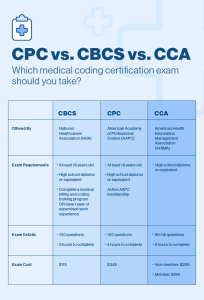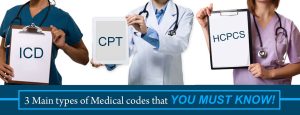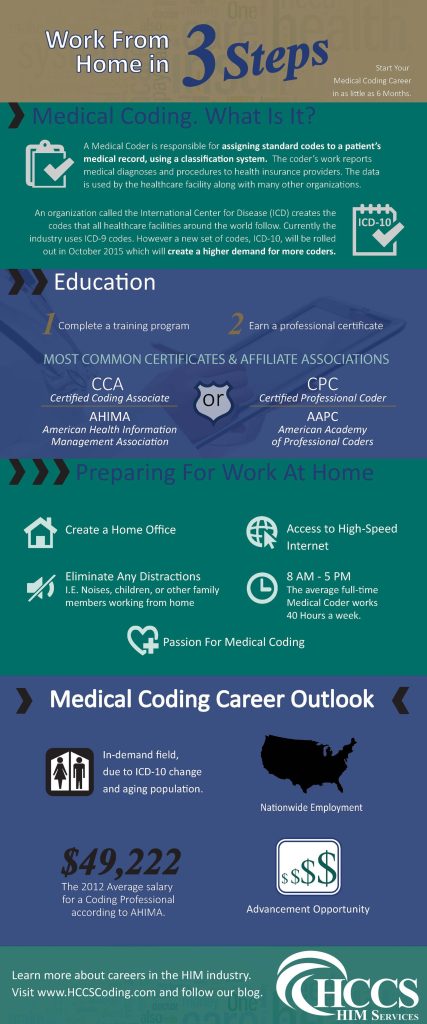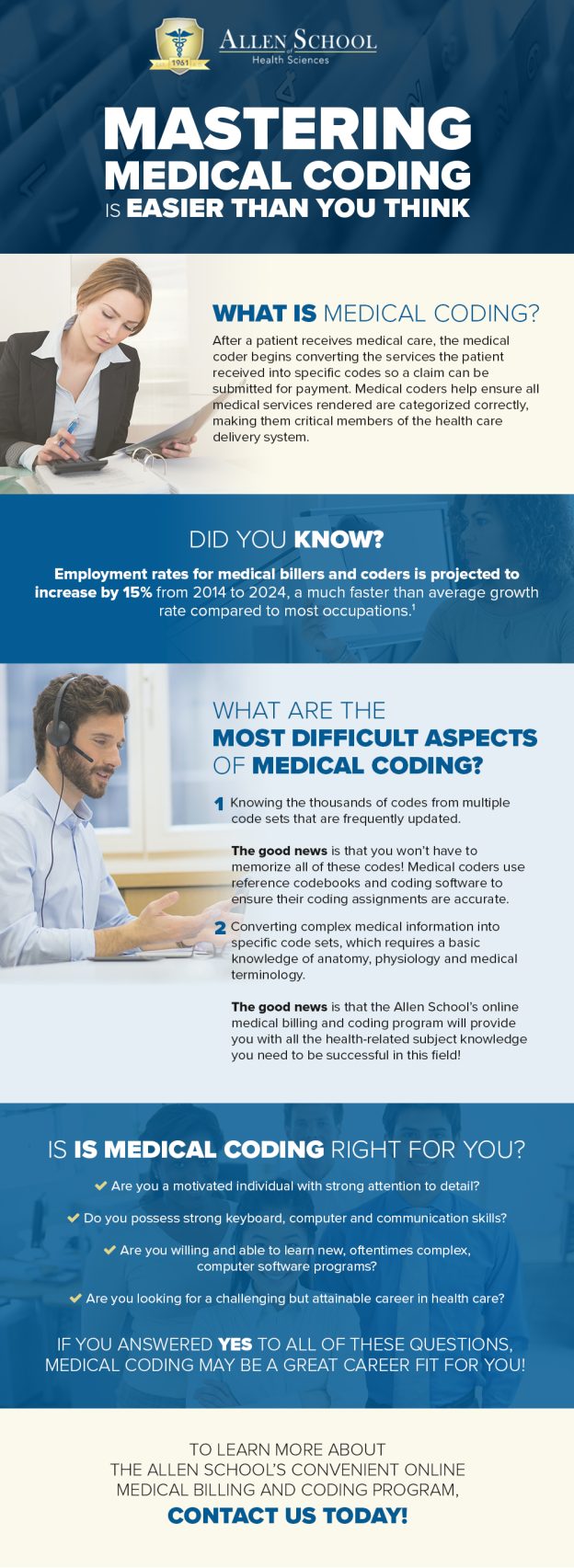Are you interested in learning clinical coding and are unsure where to start? This article provides a brief overview of how to embark on your journey to mastering this valuable skillset. With the increasing demand for qualified professionals in healthcare information management, learning clinical coding can open up a world of opportunities. By understanding the foundations of clinical coding, gaining practical experience, and investing in continuous learning, you can acquire the expertise necessary to excel in this field. Whether you are a healthcare professional looking to expand your skillset or an aspiring beginner, this article will guide you through the essential steps to become proficient in clinical coding.
Understanding Clinical Coding

What is Clinical Coding?
Clinical coding is a process where medical information is transformed into alphanumeric codes for the purpose of documentation, statistical analysis, and reimbursement. These codes represent diagnoses, procedures, treatments, and healthcare services provided to patients. Clinical coders play a crucial role in accurately translating medical information into standardized codes, ensuring the integrity and consistency of healthcare data.
Importance of Clinical Coding
Clinical coding is essential in healthcare for several reasons. Firstly, it enables the collection, analysis, and comparison of data on a local, national, and international level. This data assists in the understanding of disease patterns, healthcare utilization, treatment outcomes, and the effectiveness of interventions. Accurate coding also supports the accurate billing and reimbursement of healthcare services, ensuring that healthcare providers are appropriately compensated for their work. Furthermore, clinical coding plays a vital role in research, public health surveillance, quality improvement initiatives, and policy development.
Role of a Clinical Coder
The role of a clinical coder is significant in the healthcare ecosystem. Clinical coders are responsible for reviewing and analyzing medical records to extract pertinent information and assign appropriate codes following established coding guidelines and principles. They need to have a deep understanding of medical terminology, anatomy, procedures, and clinical documentation. Clinical coders liaise with medical professionals, including doctors and nurses, to clarify any ambiguities or obtain additional information when necessary. They work closely with healthcare administrators, insurance companies, and government agencies to ensure accurate and consistent coding practices across the healthcare system.
Educational Requirements

Background and Skills Required
To pursue a career in clinical coding, a strong background in science, particularly in biology and anatomy, is advantageous. Basic computer literacy and knowledge of medical information systems are also essential. Excellent analytical and critical thinking skills, attention to detail, and the ability to work in a fast-paced environment are crucial for success in this field. Effective communication skills are necessary to interact with healthcare professionals and properly document medical procedures and diagnoses.
Formal Education and Training
While formal education requirements for clinical coding may vary, a post-secondary education in health information management or a related field is commonly preferred by employers. These programs provide comprehensive training in medical coding, anatomy and physiology, medical terminology, health data management, and coding classification systems. Some institutions also offer specialized courses or certificate programs solely focused on clinical coding. It is important to choose an accredited educational program recognized by professional coding associations to ensure quality and validity of the education received.
Certification and Credentialing

Certification Options
Obtaining certification in clinical coding is highly beneficial as it validates the knowledge and competency of a coder. The two main certifications available for clinical coders are the Certified Coding Associate (CCA) and the Certified Coding Specialist (CCS) credentials, both offered by the American Health Information Management Association (AHIMA). The CCA credential is an entry-level certification aimed at individuals who are new to the field or have limited coding experience. The CCS credential, on the other hand, is for experienced coders who specialize in inpatient or outpatient coding.
Benefits of Certification
Obtaining a certification demonstrates a commitment to professional growth and validates one’s expertise in clinical coding. certified coders tend to have higher employability and earning potential compared to non-certified individuals. Additionally, certification provides access to networking opportunities, career advancement prospects, and continuing education resources. Certified coders are often preferred by employers as they have been verified by an industry-recognized governing body, ensuring their competence and adherence to professional standards.
Credentialing Organizations
Apart from AHIMA, several other organizations offer certifications and credentialing opportunities in clinical coding. The American Academy of Professional Coders (AAPC) offers the Certified Professional Coder (CPC) credential, which focuses on outpatient coding. The Board of Medical Specialty Coding (BMSC) offers specialty-specific certifications such as the Certified Cardiology Coder (CCC) and the Certified Orthopedic Surgery Coder (COCS). Credentialing organizations provide a variety of certifications that cater to different coding specialties and levels of experience.
Developing a Study Plan

Setting Goals and Objectives
Before embarking on the journey to become a clinical coder, it is essential to establish clear goals and objectives. Take the time to identify the coding specialization of interest, whether it be inpatient, outpatient, or a specific medical specialty. Determine the desired level of certification and the timeframe within which you would like to achieve it. Setting specific, measurable, achievable, relevant, and time-bound (SMART) goals will help maintain focus and provide direction throughout the learning process.
Choosing Learning Resources
Multiple learning resources are available to aid in the acquisition of clinical coding knowledge. Textbooks, online courses, tutorials, and professional associations are instrumental in providing comprehensive educational materials. It is advisable to choose resources that align with personal learning preferences and accommodate individual schedules and financial constraints. Utilizing a combination of resources, such as textbooks for foundational knowledge and online courses for practical application, can enhance learning outcomes.
Creating a Study Schedule
Organizing and managing time effectively is crucial when pursuing clinical coding education. Creating a study schedule helps allocate dedicated time for learning activities and ensures consistent progress towards the desired goals. Consider the availability of personal time, work commitments, and other responsibilities when designing a study schedule. Prioritize regular study sessions, allow for breaks, and establish realistic expectations to prevent burnout and maintain a healthy work-life balance.
.
Learning Resources and Materials

Textbooks and Reference Guides
Textbooks and reference guides are invaluable resources for clinical coding education. These materials provide in-depth knowledge about medical terminology, anatomy and physiology, coding guidelines, and coding classification systems. Popular titles in the field include “ICD-10-CM and ICD-10-PCS Coding Handbook” by Nelly Leon-Chisen, “CPT Professional Edition” by the American Medical Association, and “Principles of Healthcare Reimbursement” by Anne Casto.
Online Courses and Tutorials
Online courses and tutorials offer flexibility and convenience for individuals seeking clinical coding education. These options provide interactive learning experiences, allowing students to apply coding principles in simulated scenarios. AHIMA and AAPC offer a variety of online courses and self-study materials specifically tailored to coding education. Additionally, numerous e-learning platforms, such as Udemy and Coursera, feature comprehensive clinical coding courses taught by industry professionals.
Professional Associations
Joining professional associations in the field of clinical coding can prove valuable for networking, keeping up with industry updates, and accessing educational resources. AHIMA, AAPC, and the Association of Clinical Coders and Auditors (ACCA) are some renowned professional organizations that provide educational webinars, conferences, and forums for coders to connect and learn from each other. The resources and support provided by professional associations enhance professional development and foster continuous learning among clinical coders.
Hands-On Experience

Internships and Externships
Gaining practical experience through internships and externships can significantly enhance clinical coding skills. Many healthcare facilities, coding consulting firms, and health information management departments offer internships or externships for aspiring coders. These opportunities provide a real-world coding experience, enabling individuals to apply their knowledge in a professional setting under the guidance of experienced coders. Internships and externships also serve as a valuable networking opportunity and may lead to job offers upon completion.
Volunteer Opportunities
Volunteering in healthcare settings, such as clinics or hospitals, can provide exposure to medical records and coding practices. Although volunteers may not have direct coding responsibilities, being immersed in a healthcare environment exposes individuals to medical terminologies, patient encounters, and various healthcare procedures. Observing and engaging with healthcare professionals can deepen understanding of clinical documentation and coding processes, supplementing formal education efforts.
Participate in Case Studies or Research Projects
Engaging in case studies or research projects related to clinical coding offers practical experience and promotes critical thinking skills. Participating in coding audits, where coded records are reviewed for accuracy and compliance, provides valuable feedback and insight into areas of improvement. Case studies involving complex coding scenarios challenge individuals to apply their knowledge and problem-solving abilities. Such experiences sharpen coding skills and facilitate a deeper understanding of coding principles in practical contexts.
Mastering Coding Systems

ICD-10-CM
ICD-10-CM (International Classification of Diseases, 10th Revision, Clinical Modification) is a coding system used to classify diseases, injuries, and other health conditions. Mastering ICD-10-CM involves understanding the structure of the code set, the guidelines, and the conventions for accurate code assignment. Extensive knowledge of medical terminology, anatomy, and clinical documentation is crucial to properly assign codes that reflect the patient’s condition.
CPT
Current Procedural Terminology (CPT) is a widely used coding system developed by the American Medical Association. CPT codes are used to describe medical procedures, surgeries, and services provided by healthcare professionals. Mastering CPT involves understanding the organization and structure of the code set, as well as the guidelines and conventions for accurate coding. Familiarity with medical procedures, documentation requirements, and the hierarchy of codes within each section is necessary to accurately assign CPT codes.
HCPCS
Healthcare Common Procedure Coding System (HCPCS) is a coding system used to describe medical supplies, equipment, and services not covered by CPT codes. HCPCS codes are often used for billing and reimbursement purposes. Mastering HCPCS involves understanding the various code levels, including Level I codes (similar to CPT codes) and Level II codes (specifically for government programs such as Medicare). Awareness of the HCPCS code structure, guidelines, and modifiers is essential for accurate coding and billing.
SNOMED CT
Systematized Nomenclature of Medicine Clinical Terms (SNOMED CT) is a comprehensive clinical terminology and coding system. Unlike other coding systems primarily used in billing and reimbursement, SNOMED CT focuses on clinical documentation and the precise representation of clinical concepts. Mastering SNOMED CT involves understanding the hierarchical structure of the coding system, as well as the principles of concept selection and code assignment. SNOMED CT offers detailed terminology for clinical documentation improvement, research, and quality measurement.
Medical Terminology

Understanding Medical Language
An understanding of medical language is crucial for clinical coders to accurately interpret and code medical information. Medical terminology includes terms for anatomical structures, diseases, symptoms, medications, and procedures. Clinical coders must familiarize themselves with prefixes, suffixes, and root words to comprehend medical terms and derive meaning. Studying medical terminology and its relationship to coding systems enhances coding proficiency and ensures accurate code assignment.
Common Medical Abbreviations
Medical abbreviations are used to efficiently communicate medical information, but they can also pose challenges for clinical coders. Understanding common medical abbreviations is crucial to interpret medical records accurately and assign appropriate codes. A comprehensive list of medical abbreviations is available in textbooks, online resources, and reference guides. Regular exposure to medical abbreviations through coding practice exercises and practical application can improve proficiency in decoding and understanding abbreviations.
Anatomy and Physiology
A strong understanding of human anatomy and physiology is fundamental for clinical coders. Anatomy provides knowledge of the human body’s structure, including organs, systems, and their interrelationships. Physiology helps coders understand the functions of different body systems and how they relate to medical conditions and procedures. Mastery of anatomy and physiology enables clinical coders to accurately assign codes by identifying the specific body areas affected and the underlying pathophysiology of diseases and procedures.
Practical Application

This image is property of www.hccscoding.com.
Coding Practice Exercises
Engaging in coding practice exercises is crucial to reinforce coding skills and improve accuracy and efficiency. Coding exercises can be found in textbooks, online platforms, and coding workbooks specifically designed to provide practical scenarios. These exercises simulate real-life coding scenarios and challenge coders to apply coding guidelines, select appropriate codes, and identify coding errors. Regular practice in coding exercises enhances proficiency and confidence in clinical coding.
Analyzing Medical Records
Analyzing medical records provides hands-on experience in interpreting clinical documentation and assigning codes accordingly. It involves reviewing patient information, such as medical history, diagnostic tests, physician’s notes, and treatment plans. Analyzing medical records strengthens understanding of coding guidelines, reinforces knowledge of medical terms and procedures, and sharpens skills in determining the most accurate and specific codes. This practical application of coding enriches learning outcomes and prepares coders for real-world coding scenarios.
Coding Audits
Coding audits encompass the examination of coded medical records to ensure accuracy and compliance with coding guidelines and regulations. Participating in coding audits provides valuable feedback on coding accuracy, identifies areas for improvement, and deepens understanding of coding principles. Coding audits may be performed internally by healthcare facilities or externally by coding consultants or insurance companies. Engaging in coding audits enhances coding proficiency, promotes quality improvement, and prepares coders for the scrutiny of professional coding organizations.
Continuing Education and Professional Development

Staying Updated with Industry Changes
Clinical coding is a constantly evolving field, with regular updates to coding guidelines, classification systems, and industry standards. Staying updated with industry changes is paramount to ensure accurate and compliant coding practices. Various resources, such as online forums, professional associations, webinars, and newsletters, provide updates on changes, best practices, and emerging trends in clinical coding. Actively seeking opportunities to stay informed and adjusting coding practices accordingly demonstrates commitment to professional growth and excellence.
Attending Seminars and Workshops
Attending seminars and workshops focused on clinical coding allows coders to augment their knowledge and skills. These events provide opportunities to learn from coding experts, delve into specific coding topics, and engage in interactive discussions. Seminars and workshops often include case studies, coding exercises, and practical scenarios to strengthen coding proficiency. Networking with other coders and professionals in the field is an additional benefit of attending such events, as it facilitates knowledge sharing and expands professional networks.
Joining Professional Networks
Joining professional networks, such as local coding associations or online communities, fosters collaboration, learning, and career development. Networking with other clinical coders provides a platform for sharing experiences, seeking advice, and staying updated with coding practices. Professional networks often offer mentoring programs, forums, and job boards, enabling coders to connect with experienced professionals, discuss coding challenges, and explore career opportunities. Active participation in professional networks enhances professional growth and keeps coders informed about the latest coding trends and advancements.
In conclusion, mastering clinical coding requires dedication, a solid educational foundation, practical experience, and continuous professional development. By understanding the significance of clinical coding, pursuing formal education, obtaining certifications, utilizing learning resources, gaining hands-on experience, and engaging in ongoing learning and networking, you can embark on a rewarding career as a skilled clinical coder.
